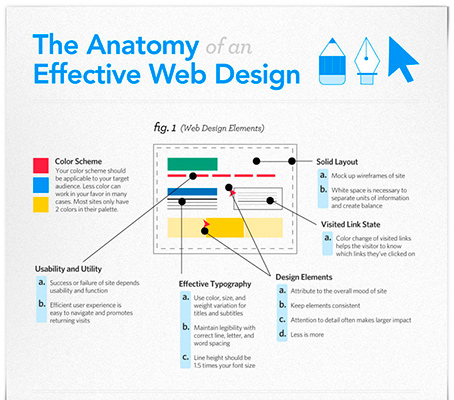The Growth Of Web Design: After That And Now
The Growth Of Web Design: After That And Now
Blog Article
Written By-Johnsen Hejlesen
In the past, web sites were straightforward and concentrated on information. Navigation was straight, and layout was for desktop computers. Now, individual experience is essential. Data guides layouts for easy navigating. Receptive layouts suit various devices. Today, dark setting minimizes stress, and minimalist food selections improve navigation. Interactive features engage users, and bold visuals attract attention. AI assimilation boosts engagement. See exactly how design has actually advanced to enhance your on-line trip.
Very Early Days of Web Design
In the early days of website design, simpleness reigned supreme. Sites were basic, with limited colors, font styles, and designs. The focus got on supplying details as opposed to showy visuals. Users accessed the internet via sluggish dial-up links, so rate and performance were essential.
Navigation food selections were straightforward, usually situated on top or side of the page. Web sites were made for home computer, as mobile browsing wasn't yet widespread. Content was king, and designers focused on simple readability over complex layout components.
HTML was the key coding language used, and designers needed to work within its restrictions. Computer animations and interactive attributes were minimal compared to today's criteria. Sites were static, with little vibrant material or customized customer experiences.
Increase of User-Focused Layout
With the development of site design, a change in the direction of user-focused layout principles has actually become increasingly noticeable. Today, developing sites that prioritize user experience is vital for involving visitors and accomplishing business goals. User-focused design entails understanding the demands, preferences, and habits of your target audience to customize the site's format, web content, and features as necessary.
Developers currently perform extensive study, such as individual surveys and use screening, to gather insights and comments directly from individuals. This data-driven approach helps in developing user-friendly navigating, clear calls-to-action, and aesthetically appealing user interfaces that resonate with visitors. By placing the user at the facility of the design process, web sites can deliver an extra personalized and delightful experience.
Receptive design has also become a vital aspect of user-focused layout, ensuring that sites are enhanced for different devices and display dimensions. This versatility enhances availability and functionality, catering to the varied ways customers interact with web sites today. In essence, the surge of user-focused style signifies a shift in the direction of producing electronic experiences that prioritize the demands and assumptions of completion individual.
Modern Trends in Website Design
Check out the latest patterns forming web design today. One noticeable trend is dark mode design, providing a smooth and contemporary appearance while lowering eye stress in low-light settings. Another key fad is minimalist navigation, simplifying food selections and enhancing individual experience by focusing on essential elements. Including micro-interactions, such as animated buttons or scrolling impacts, can create an extra interesting and interactive site. Responsive design remains essential, ensuring smooth user experiences across different tools. Furthermore, utilizing vibrant typography and unbalanced formats can include aesthetic interest and accentuate details material.
Integrating AI modern technology, like chatbots for client assistance or tailored recommendations, boosts customer involvement and simplifies processes. Accessibility has additionally end up being a significant fad, with designers focusing on inclusive design techniques to cater to varied customer needs. Accepting sustainability by enhancing site efficiency for speed and effectiveness is one more arising fad in website design. Working together with https://www.theodysseyonline.com/video-production-and-how-it-plays-into-a-digital-marketing-strategy and information analytics to repeat and improve layout continuously is necessary for remaining appropriate in the ever-evolving electronic landscape. By welcoming these modern trends, you can develop a visually attractive, easy to use web site that resonates with your target market.
Verdict
As you reflect on the evolution of site style from the early days to now, you can see how user-focused layout has ended up being the driving force behind modern patterns.
Accept the trip of modification and adjustment in website design, always maintaining the customer experience at the center.
Tippingpointdigital
Stay present with the current patterns and modern technologies, and never ever quit evolving your strategy to produce visually stunning and easy to use websites.
Advance, adapt, and develop - the future of web design is in your hands.
